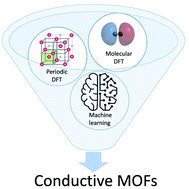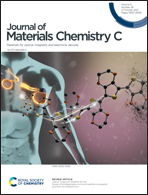Computational techniques for characterisation of electrically conductive MOFs: quantum calculations and machine learning approaches
Abstract
The customisability of metal–organic frameworks (MOFs) has attracted exponentially growing interest in the realm of materials science. Because of their porous nature, MOF research has been primarily focused on gas storage and separation. More recent investigations into MOFs have realised promising electronic characteristics suitable for applications in electrocatalysis, resistive sensing and energy storage. Despite high porosity and presence of organic linkers, — properties that contribute to the electrical insulating properties of most MOFs — several strategies have been developed to construct MOFs with high conductivity. These recent findings serve as strong encouragement that the incorporation of charge transport chemistries into MOFs leads to structures that exhibit conductive behaviour. However, our understanding behind the nature of conductivity in MOFs is not yet explicitly evident. The development of outstanding conductive MOFs would be greatly accelerated if we had an atomistic-level understanding of how low-energy charge transport pathways can be installed in MOFs. In this context, computational quantum mechanical methods can produce rich electronic structure details with sufficient accuracy to provide insights towards MOFs’ conductive behaviour. An emerging alternative design strategy is the use of machine learning to accelerate the way we screen and discover new conductive materials. In this review, we summarise the most widely used quantum mechanical techniques to characterise important band structure parameters and compare them with experimental measurements in the MOF literature. We also highlight the current state of the art in machine learning assisted screening of MOFs for their conductive properties and discuss the opportunities and challenges which lie ahead in this exciting field.

- This article is part of the themed collection: Journal of Materials Chemistry C Emerging Investigators


 Please wait while we load your content...
Please wait while we load your content...